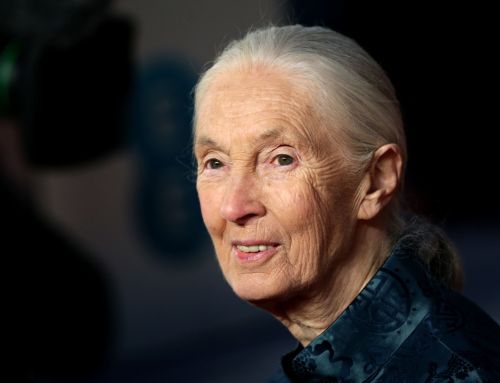An unusual blinking fish is helping scientists understand more about how human ancestors transitioned to life on land from water millions of years ago.
It is thought that life on Earth first began in the ocean around 3.5 million years ago.
As oxygen in the atmosphere increased over time, the descendants of these organisms began to live in shallower waters and eventually moved to land.
Over millions of years, as animals began to adapt to life on land, they evolved limbs and traded gills for lungs.
Scientists believe that the ability to blink in humans as well as tetrapods (four-legged animals) also evolved during the transition from water to land.
But the researchers said studying this behaviour has been challenging because the anatomical changes that allow blinking are mainly in soft tissues – which are not preserved in fossil records.
So experts in the US wanted to investigate if the mudskipper – a type of fish that can live on both land and water – could provide clues.
Mudskippers are thought to be the only fish that can blink – other aquatic creatures with eyes do not have moveable eyelids.
Instead, they have a transparent eye protector permanently in place.
The researchers found that mudskippers blink for the same reasons as humans and other animals do – to clean and protect the eyes.
Thomas Stewart, assistant professor of biology at Penn State University in the US, said: “Animals blink for many reasons.
“It helps us keep our eyes wet and clean, it helps us protect our eyes from injury, and we even use blinking for communication.”
He added: “The transition to life on land required many anatomical changes, including changes for feeding, locomotion and breathing air.
“Based on the fact that mudskipper blinking, which evolved completely independently from our own fishy ancestors, serves many of the same functions as blinking in our own lineage, we think that it was likely part of the suite of traits that evolved when tetrapods were adapting to live on land.”
Scientists analysed many videos of mudskippers to understand more about the mechanism involved in their blinks.
These fish blink by lowering the eyes into a fleshy lower eyelid – known as the dermal cup – and it lasts about the same length of time as a human blink.
Brett Aiello, assistant professor of biology at Seton Hill University, said: “Blinking in mudskippers appears to have evolved through a rearrangement of existing muscles that changed their line of action and also by the evolution of a novel tissue, the dermal cup.
“This is a very interesting result because it shows that a very rudimentary, or basic, system can be used to conduct a complex behaviour.
“You don’t need to evolve a lot of new stuff to evolve this new behaviour – mudskippers just started using what they already had in a different way.”
The researchers said that despite being a subtle action, blinking is quite complex, because it performs multiple functions, which are key to the health and safety of the eye.
Prof Aiello added: “Our study, which considered the behaviour and anatomy of a living fish that underwent a transition to life on land, similar to the earliest tetrapods, helps us to reimagine how and why these early tetrapods might have been blinking.
“Having the opportunity to study how and why this behaviour first evolved provides an amazing opportunity to learn more about the way humans came to be as they are and gives us insight into changes associated with major transitions in the history of animals – like inhabiting land.”
The research is published in the journal Proceedings of the National Academy of Sciences.






